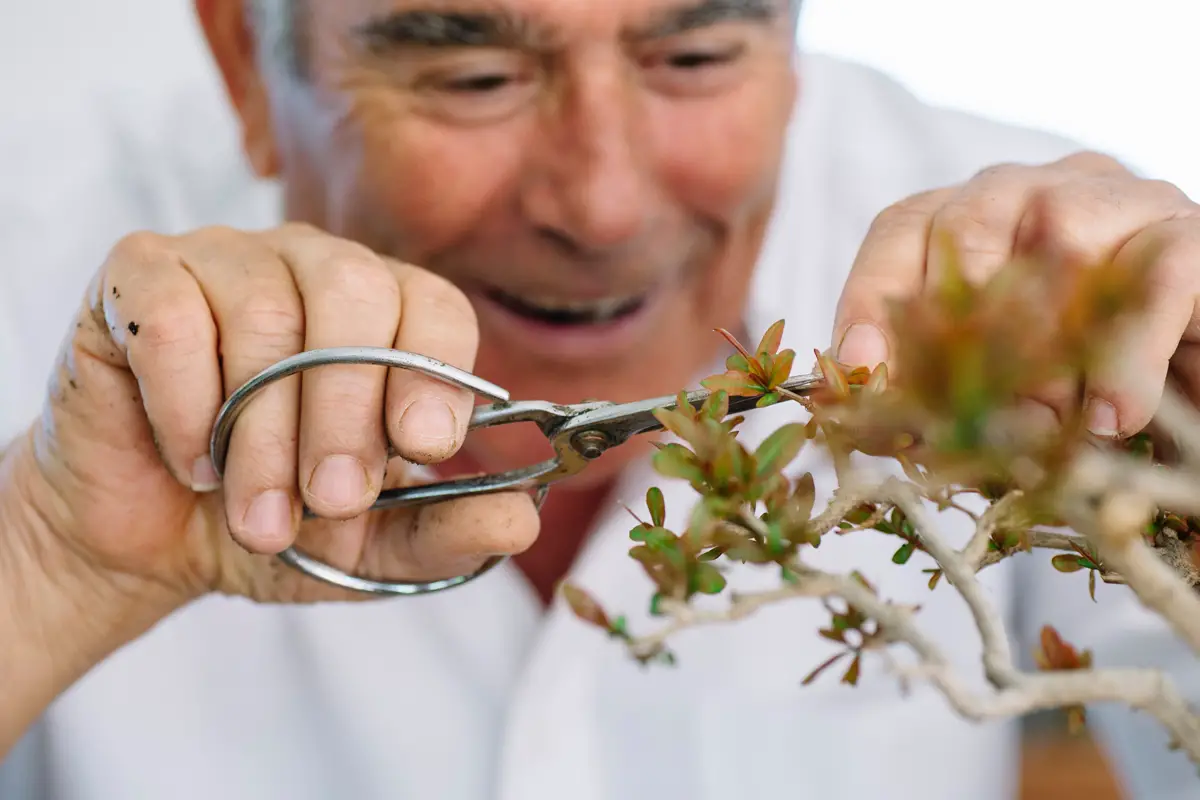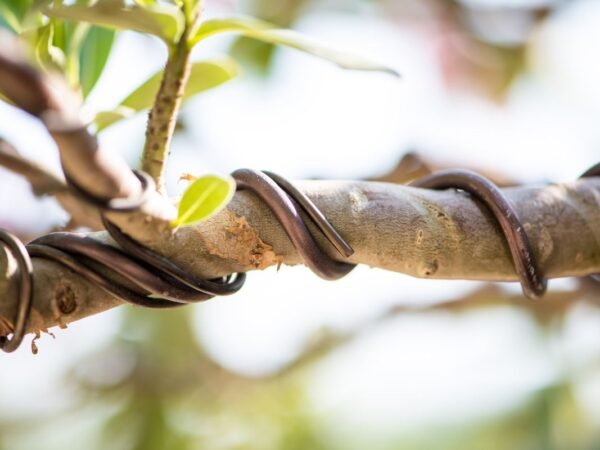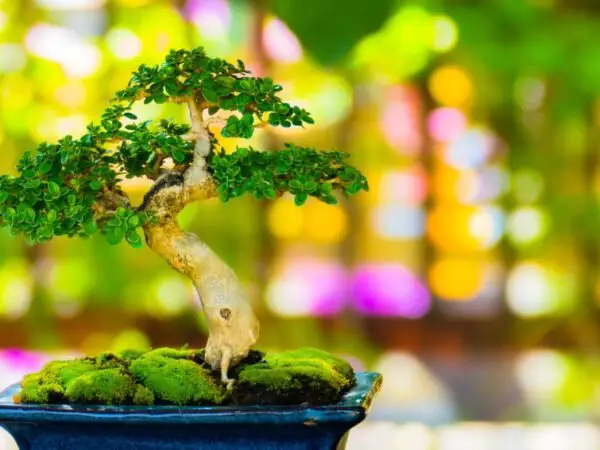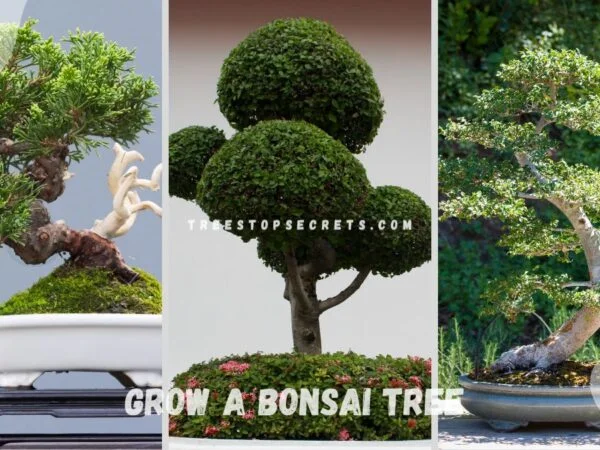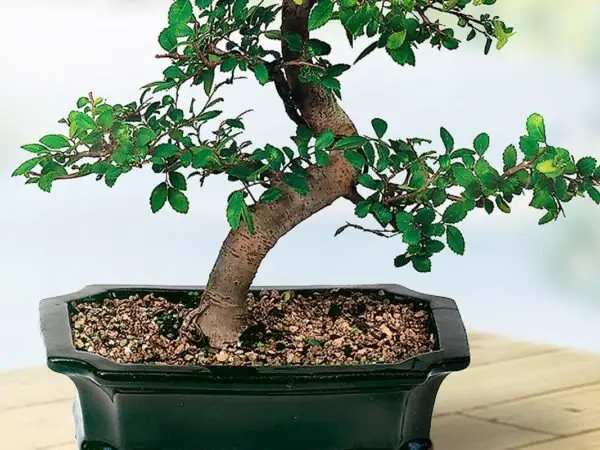Bonsai trees are a beautiful and rewarding addition to any home or garden. These miniature trees are not only visually stunning, but they also require a great deal of care and attention to thrive. This guide will provide you with everything you need to know about how to take care of a bonsai tree, from watering and pruning to sunlight requirements and repotting. Whether you’re a beginner or have some experience, these tips will help you keep your bonsai tree healthy and vibrant.
How to Take Care of a Bonsai Tree
Taking care of a bonsai tree involves several important steps, each contributing to the tree’s overall health and appearance. Bonsai trees are not just regular plants; they are artistic expressions that require specific care techniques. Understanding these techniques will help you nurture your bonsai into a thriving, miniature masterpiece.
1. Watering Your Bonsai Tree
Watering is a critical aspect of bonsai care. Unlike regular houseplants, bonsai trees have a shallow root system, meaning they can dry out quickly. The soil should be kept moist but not waterlogged.
Examples of Proper Watering Techniques:
- Use a watering can with a fine nozzle to avoid disturbing the soil.
- Water until it begins to run out of the drainage holes, ensuring the roots are well-hydrated.
Tips for Effective Watering:
- Check soil moisture daily by touching the soil with your finger.
- Adjust watering frequency based on the season; bonsai trees typically need more water in the summer and less in the winter.
2. Pruning and Shaping
Pruning is essential for maintaining the shape and size of your bonsai tree. Regular pruning helps control growth and encourages the development of a dense canopy.
Examples of Pruning Techniques:
- Use sharp, clean scissors to trim new growth, focusing on maintaining the tree's desired shape.
- Remove dead branches and leaves to promote healthy growth.
Tips for Pruning:
- Prune during the growing season, typically in late spring or early summer.
- Avoid heavy pruning in late autumn or winter when the tree is dormant.
3. Sunlight and Temperature
Bonsai trees require the right amount of sunlight to thrive. The amount of light needed can vary depending on the type of bonsai.
Examples of Sunlight Requirements:
- Juniper bonsai trees need full sun and should be placed outside.
- Ficus bonsai trees prefer bright, indirect sunlight and can be kept indoors.
Tips for Providing Proper Sunlight:
- Rotate your bonsai regularly to ensure even exposure to sunlight.
- Monitor temperature and humidity levels, especially for indoor bonsai trees.
Table: Basic Care Requirements for Different Types of Bonsai Trees
| Bonsai Tree Type | Watering Frequency | Sunlight Requirements | Temperature Range (°C) | Pruning Season |
|---|---|---|---|---|
| Juniper | Every 2-3 days | Full sun | 10-24 | Late Spring to Summer |
| Ficus | Once every 4-5 days | Bright, indirect light | 18-26 | Year-round |
| Maple | Daily in summer | Partial shade | 15-22 | Early Spring |
| Pine | Weekly | Full sun | 5-18 | Late Summer |
Understanding Bonsai Basics
What is a Bonsai Tree?
A bonsai tree is not a genetically modified plant; rather, it is a normal tree that is meticulously trained using techniques such as regular pruning and wiring to keep it miniature (Bonsai Empire). The term "bonsai" translates to "planted in a container," highlighting the importance of growing these trees in pots or containers. This art form allows for the creation of miniature landscapes that reflect the beauty of nature on a smaller scale.
Bonsai trees can take on various shapes and styles, and there are numerous classification systems that have developed over the years to resemble different natural circumstances. This allows for personal interpretation and creativity, meaning that each bonsai does not have to conform to a specific form.
History of Bonsai
The history of bonsai is rich and dates back over 2000 years. The practice originated in the Chinese empire around 700 AD, where artists began creating miniature landscapes. This style of gardening evolved over centuries and was later adopted by the Japanese during the Kamakura period. The Japanese shifted the focus from entire landscapes to individual trees, leading to the distinctive Japanese style of bonsai that is widely recognized today (Bonsai Empire).
The art of bonsai has continued to evolve, with various styles and techniques being developed along the way. Today, bonsai trees are cherished not only for their aesthetic appeal but also for the patience and care required to cultivate them. Each tree tells its own story through the craftsmanship and dedication of its caretaker.
Choosing the Right Tree
Selecting the right bonsai tree is essential for a successful bonsai journey. Different species have unique requirements for cultivation, training, and care. Below, I will explore some popular bonsai species and the factors to consider when making this important decision.
Popular Bonsai Species
There are numerous species suitable for bonsai cultivation. Some of the most popular ones include:
| Species | Characteristics | Care Requirements |
|---|---|---|
| Ficus | Easy to care for, adaptable to indoor conditions | Prefers well-draining soil, regular watering |
| Juniper | Hardy, evergreen, good for outdoor bonsai | Requires well-draining soil, moderate watering |
| Jade | Succulent, tolerant of neglect | Needs less frequent watering, prefers dry conditions |
| Live Oak | Broadleaf evergreen, strong structure | Similar to deciduous care, requires proper soil type |
| Yaupon Holly | Resilient, adaptable to various climates | Needs regular watering, prefers slightly acidic soil |
Each bonsai tree species has specific requirements for cultivation, making it crucial to select the right species for my environment to keep it healthy (Bonsai Empire).
Factors for Selection
When choosing a bonsai tree, consider the following factors:
- Climate: Understand the climate in your area. Tropical species, like the Jade, require different care compared to temperate species, such as Junipers.
- Space: Evaluate the space where the bonsai will be placed. Indoor bonsai may need species that can thrive in lower light conditions.
- Water Requirements: Different bonsai species have varying water needs. For instance, deciduous trees generally prefer wetter soil than conifers, while tropical species like Jade require less watering (Bonsaiable).
- Growth Habit: Consider the growth habit of the species. Some trees grow tall, while others remain compact, which will affect pruning and styling techniques.
- Skill Level: Assess your experience with bonsai care. Some species are easier to manage than others, making them more suitable for beginners.
By considering these factors, I can select the best bonsai tree species that aligns with my lifestyle and environment, ensuring a fulfilling and rewarding bonsai experience.
Essential Care Practices
Taking care of a bonsai tree requires attention to several essential practices. Proper watering, fertilizing, and soil mixtures are crucial for maintaining the health and vitality of my bonsai.
Watering Guidelines
Proper watering is critical for bonsai tree care. The frequency of watering depends on several factors, including tree species, pot size, time of year, soil mixture, and climate. Understanding the basic guidelines helps identify when my tree needs watering.
| Factor | Watering Guidelines |
|---|---|
| Deciduous Trees | Prefer wetter soil, water more frequently |
| Conifers | Require less water, allow soil to dry slightly |
| Tropical Species (e.g., Jade) | Need less watering, check soil moisture regularly |
It's essential to monitor the soil moisture regularly, as different species have varying water requirements.
Fertilizing Requirements
Regular fertilization during the growing season is essential for bonsai trees to survive and thrive. Since my bonsai is confined to a small pot, it needs proper fertilization to replenish the soil's nutritional content. I typically follow these guidelines:
| Season | Fertilization Frequency |
|---|---|
| Spring | Every 2-4 weeks |
| Summer | Every 2-4 weeks |
| Fall | Reduce frequency |
| Winter | Minimal or no fertilization |
Using a balanced fertilizer that provides essential nutrients helps promote healthy growth (Bonsai Empire).
Soil Mixtures
The right soil mixture is crucial for bonsai tree care. It needs to supply nutrients, drain properly, provide aeration, and retain water. While ready-mixed soils are available, I prefer preparing a tailored soil mixture based on the specific tree species. This approach offers control over the composition and can be cost-effective.
| Soil Component | Purpose |
|---|---|
| Akadama | Good water retention and aeration |
| Pumice | Improves drainage and aeration |
| Lava Rock | Provides structure and prevents compaction |
| Organic Material (e.g., compost) | Supplies nutrients |
Using a soil mix with poor drainage, like general-purpose compost, can lead to stagnant water in the pot, hindering root growth and causing root rot (Bonsaiable). Optimal soil mixes can vary based on the species and environment.
Pruning and Styling
Pruning and styling are essential practices in the art of bonsai. These techniques help to maintain the tree's miniature size and promote a healthy growth pattern. Through my journey, I have learned the significance of these techniques and how they contribute to the overall aesthetics of a bonsai tree.
Techniques for Pruning
Pruning involves cutting back certain parts of the bonsai tree to shape its growth and encourage new foliage. This technique is crucial for maintaining the desired size and appearance of the tree. I have found the following pruning techniques to be effective:
-
Regular Pruning: Regularly trimming back new growth helps to keep the tree compact. I typically prune during the growing season to encourage denser foliage.
-
Structural Pruning: This involves removing branches that disrupt the desired shape of the tree. It is best to do this in early spring before new growth begins.
-
Pinching: Pinching involves using fingers to remove the tips of new growth, which stimulates branching and creates a fuller appearance.
-
Defoliation: This technique involves removing leaves to encourage new growth and improve light penetration. I usually practice this method in the early summer when the tree is healthy.
| Pruning Technique | Purpose | Best Time to Perform |
|---|---|---|
| Regular Pruning | Maintain compactness | Growing season |
| Structural Pruning | Shape the tree | Early spring |
| Pinching | Stimulate branching | Growing season |
| Defoliation | Improve growth and light exposure | Early summer |
Wiring and Shaping
Wiring is another important aspect of bonsai styling. It allows me to shape the branches and trunk of the tree to create a more aesthetically pleasing form. The following steps outline the wiring process:
-
Selecting the Wire: I choose aluminum or copper wire, as they are flexible and easy to work with. The thickness of the wire depends on the size of the branches I want to shape.
-
Applying the Wire: I wrap the wire around the branch in a spiral manner, starting from the base and moving up. Care must be taken not to wrap too tightly, as this can damage the bark.
-
Shaping the Branch: After applying the wire, I gently bend the branch into the desired position. It is important to check regularly for any signs of wire cutting into the bark.
-
Removing the Wire: Once the branch has set in its new position, I remove the wire after a few months to avoid any damage to the tree.
Bonsai trees can be shaped in various styles, such as upright, cascading, or slanting, allowing for personal interpretation and creativity. These styles mimic natural forms and add character to the bonsai.
By mastering these pruning and styling techniques, I have been able to create a bonsai that reflects my vision while ensuring its health and longevity.
Repotting and Transplanting
Repotting and transplanting are vital aspects of bonsai tree care. They ensure that the tree has enough space for healthy root growth and sufficient nutrients to thrive.
When to Repot
I have learned that repotting should be done regularly to prevent a bonsai tree from becoming pot-bound. A pot-bound tree may starve due to depleted nutrients in the soil. Generally, I recommend repotting every 1 to 3 years, depending on the species and growth rate of the tree. Here’s a simple guideline for when to repot:
| Tree Age | Frequency of Repotting |
|---|---|
| Seedlings/Young Trees (1-3 years) | Every year |
| Mature Trees (3-5 years) | Every 2 years |
| Older Trees (5+ years) | Every 3 years or as needed |
Repotting is best done in early spring, just before the growing season starts, as this allows the tree to establish itself in the new soil before the warmer months.
How to Repot
When repotting a bonsai tree, I follow these steps to ensure the process goes smoothly:
-
Prepare the New Pot: Choose a pot that is slightly larger than the current one. Ensure it has proper drainage holes. I often use a mixture of 100% pumice for moisture control or an akadama-based mix, depending on the tree type.
-
Remove the Tree: Gently take the tree out of its current pot. I use a chopstick or a similar tool to loosen the soil around the edges, being careful not to damage the roots.
-
Trim the Roots: Inspect the roots for any dead or damaged parts. I usually trim away about one-third of the roots to encourage new growth.
-
Add Fresh Soil: Place a layer of fresh soil at the bottom of the new pot. Position the tree in the center, ensuring it sits at the same depth as before. Fill in around the roots with more soil, gently packing it down to eliminate air pockets.
-
Water Thoroughly: After repotting, I water the tree well to help settle the soil and provide moisture to the roots.
-
Care After Repotting: I keep the newly repotted tree in a shaded area for a few weeks to reduce stress.
By following these guidelines, I ensure that my bonsai tree remains healthy and continues to flourish in its new environment. Regular repotting not only provides the necessary nutrients but also allows me to shape and style my bonsai as it grows.
Pests and Diseases
Maintaining the health of my bonsai trees is critical, as they can be susceptible to various pests and diseases. I have learned that proper care can minimize the risk of infection (Bonsai Empire). In this section, I will share common pests, how to identify diseases, and effective treatment options.
Common Pests
Several pests can affect bonsai trees, each presenting unique challenges. Here are some of the most common pests I have encountered:
| Pest | Description | Symptoms |
|---|---|---|
| Spider Mites | Tiny pests found on the underside of leaves. | Webbing on leaves, stippling |
| Aphids | Small, pear-shaped insects that suck sap from leaves. | Curling leaves, sticky residue |
Spider mites often spin webs on older leaves, while aphids cluster on the underside of leaves, causing damage and potentially attracting ants.
Identifying Diseases
Identifying diseases in bonsai trees can be straightforward if one knows what to look for. Common problems include:
- Dying Leaves: This can be due to sudden lack of water, overwatering, or improper feeding.
- Viral Infections: Viruses can cause discolored leaves and sudden dieback of branches. Infected trees should be isolated to prevent cross-contamination.
Treatment Options
When dealing with pests or diseases, I have found the following treatment options effective:
-
For Pests: Identify the insect through photographs or online forums. Use an appropriate insecticide—either chemical or organic—carefully following the instructions. Start with lower doses if needed (Bonsai Empire).
-
For Fungal Infections: Move the affected tree away from other plants, prune away infected leaves, and treat the tree with a fungicide. Reapplication may be necessary, and it's important to monitor for reinfection.
By staying vigilant and employing these strategies, I can help protect my bonsai trees from pests and diseases, ensuring they thrive for years to come.
Frequently Asked Questions: How to Take Care of a Bonsai Tree
Q: How often should I water my bonsai tree?
A: The frequency of watering depends on various factors such as the species of bonsai, soil type, humidity levels, and climate. It is essential to check the moisture level of the soil regularly before watering. As a general rule, it's better to underwater than overwater your bonsai tree.
Q: Can I keep my bonsai tree indoors?
A: Yes, many species of bonsai can thrive indoors. However, it is crucial to provide adequate lighting conditions and maintain proper humidity levels for indoor growth. Some popular indoor-friendly species include Ficus, Jade Tree, and Chinese Elm.
Q: How do I prune my bonsai tree?
A: Pruning is an essential technique in maintaining the shape and health of a bonsai tree. Use sharp pruning shears or scissors to trim back new growth or remove unwanted branches carefully. Regular pruning promotes branching and helps create the desired aesthetic form.
Q: What kind of fertilizer should I use for my bonsai tree?
A: Bonsai-specific fertilizers with balanced nutrients are recommended for optimal growth. Look for fertilizers specifically formulated for bonsai trees that contain essential elements like nitrogen (N), phosphorus (P), and potassium (K). Follow the instructions provided by the manufacturer regarding application rates and frequency.
Q: How long does it take for a bonsai tree to mature?
A: The time required for a bonsai tree to mature varies depending on the species and specific growing conditions. Some bonsai trees may take several years to develop the desired appearance, while others may take decades. Patience and consistent care are key.
Remember to consult with local experts or bonsai enthusiasts for specific guidance tailored to your unique circumstances. Happy bonsai gardening!
Image Source: Paid image from CANVA

